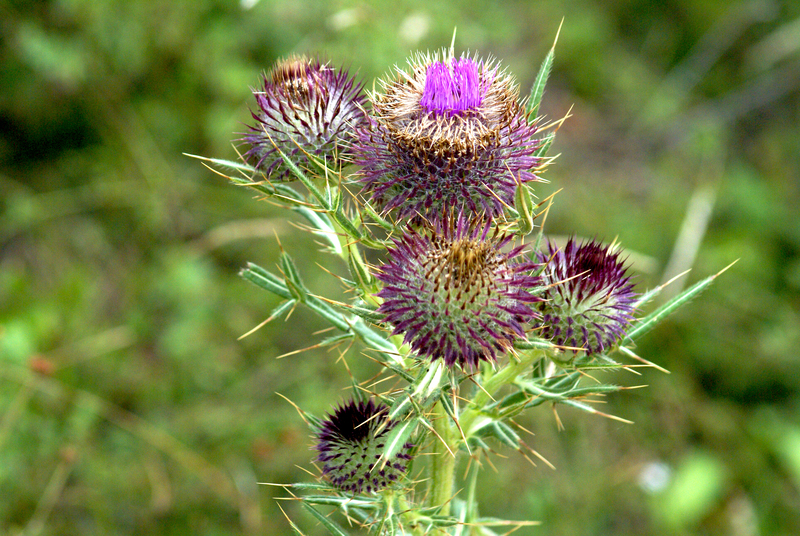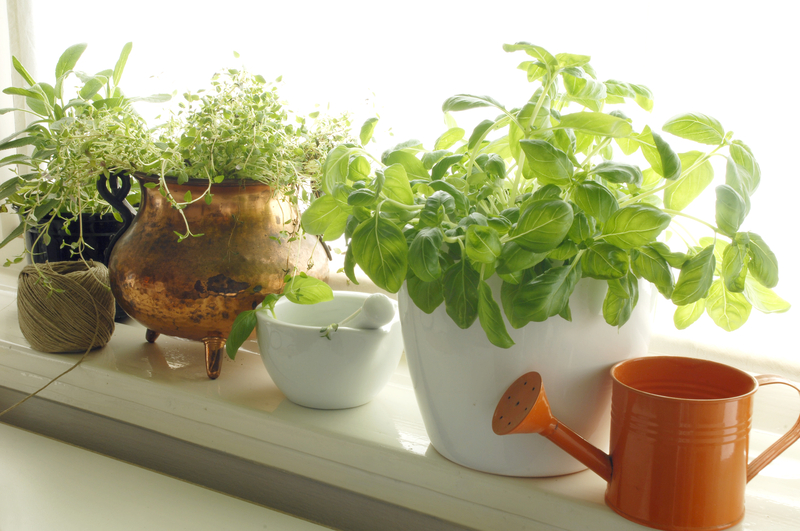Keep Garden Plants Safe: Wintertime Protection Techniques
Posted on 18/08/2025
Keep Garden Plants Safe: Wintertime Protection Techniques
As winter approaches, many gardeners face a challenging question: How do you keep your cherished garden plants safe during the coldest months? Winter brings freezing temperatures, harsh winds, snow, and ice, all of which can threaten the health and survival of your garden plants. Whether you're growing ornamentals, shrubs, or precious perennials, knowing how to safeguard your garden over the winter is crucial for a flourishing landscape in the spring. In this article, we'll explore a wide range of wintertime protection techniques, offering you practical, effective strategies that'll not only help your plants survive but thrive when warmer weather returns.

Why Winter Plant Protection Is Essential
Gardeners invest time, money, and effort cultivating a beautiful outdoor space. Winter can be especially harsh on garden plants, leading to issues such as:
- Frost damage that kills or weakens stems, leaves, and roots
- Desiccation from cold, dry winds
- Root heaving caused by soil freezing and thawing cycles
- Rodent and wildlife damage as food becomes scarce
If you invest in winter garden protection, you're essentially insuring the health and beauty of your plants for the coming year. Let's break down robust techniques to keep garden plants safe during winter.
Key Strategies to Keep Garden Plants Safe During Winter
No matter your region or planting zone, certain proven techniques will boost your garden's resilience throughout winter. Below are some of the best wintertime protection techniques for protecting plants in cold weather:
1. Mulching: Nature's Blanket
Mulching is one of the easiest and most effective ways to protect your plants when temperatures drop. Here's how to do it for maximum effectiveness:
- Apply a 2- to 4-inch layer of mulch around the base of trees, shrubs, and perennials. Use organic materials like straw, shredded leaves, pine needles, or wood chips for insulation.
- Wait until the ground freezes before applying mulch. This traps the cold in and prevents premature growth during winter warm spells.
- Keep mulch a few inches away from stems and trunks to prevent rot and rodent hiding places.
Mulch helps regulate soil temperatures, retains moisture, and minimizes root exposure to freezing and thawing cycles -- a primary cause of winter heaving.
2. Covering Plants: Cloaks Against the Cold
Physically covering plants is a proven way to shield them from frost, snow, ice, and cold winds.
- Frost cloths or row covers: Lightweight, breathable fabrics let in moisture and sunlight but block frost. Use these for tender perennials and vegetables.
- Burlap wraps: Windbreaks manufactured from burlap or similar fabrics are ideal for protecting broadleaf evergreens, roses, and shrubs.
- Plastic covers: Use caution; these can trap moisture and cause fungal diseases if not properly vented. Remove plastic covers during sunny days to avoid overheating.
- Homemade solutions: Cardboard boxes, buckets, or inverted pots can temporarily shield smaller plants during sudden cold snaps.
Always anchor covers securely and leave room for air circulation to avoid smothering your plants.
3. Watering Wisely: Preventing Desiccation
Many gardeners underestimate the power of wintertime watering. Dry roots can't absorb enough moisture in freezing conditions, causing plants to die back.
- Deeply water plants before the ground freezes, especially evergreens and newly planted shrubs or trees.
- Check soil moisture during early winter thaws. If the ground is dry and unfrozen, give plants a deep drink.
- Avoid waterlogging, as soggy soil increases the risk of root rot.
4. Pruning and Maintenance Before Winter
Proper pruning and cleanup before winter not only strengthens plants but also reduces the risk of disease and pest infestations:
- Remove diseased, dead, or damaged branches in late fall.
- Avoid major pruning of spring-flowering shrubs until after they bloom to preserve buds.
- Cut back perennials to just above ground level, unless they provide winter interest or habitat for beneficial insects.
Pruning helps plants conserve energy and directs resources to healthy tissue vital for winter survival.
5. Windbreaks and Barriers: Battling the Breeze
Cold, drying winds are notorious for causing winter burn on evergreens and shrubs. Install windbreaks to buffer your beloved plants:
- Build temporary fences from burlap or snow fencing on the windward side of plantings.
- Use natural windbreaks such as evergreen hedges or strategically placed structures like sheds and walls.
- For container plants, cluster pots together in a sheltered area, or move them next to buildings for added warmth and wind protection.
6. Protecting Container Plants from Winter
Potted plants are extra vulnerable as their roots are more exposed to fluctuating temperatures. To keep container plants safe during winter:
- Move pots to unheated garages, sheds, or against south-facing walls.
- Wrap containers in bubble wrap, burlap, or horticultural fleece to insulate roots.
- Mulch the surface of the pot and group pots together for shared warmth.
- Raise pots off the ground to prevent waterlogging from snow melt.
Tackling Common Winter Garden Hazards
Protecting Delicate Plants from Snow and Ice
Heavy snow and ice accumulation can break branches and stems, especially on evergreens and broadleaf shrubs:
- Gently brush off snow from branches using a broom after each storm. Avoid shaking, as chilled, brittle branches may snap.
- For heavy ice, allow it to melt naturally--attempting to remove it may cause more harm than good.
- Consider staking fragile plants or wrapping them loosely in burlap to provide extra structural support.
Defending Against Rodents and Wildlife
Mice, voles, rabbits, and deer often turn to your garden plants as a food source in winter:
- Install wire mesh or hardware cloth around the base of trees and shrubs (at least 2 feet tall and several inches below ground level).
- Remove thick mulch and plant debris near trunks to reduce rodent hiding places.
- Spray repellents or use motion-activated deterrents around your garden's perimeter.
- Consider planting deer-resistant species if your area is especially prone to wildlife grazing.
Addressing Salt Damage from Ice Melt Products
De-icing salts used on driveways and sidewalks can seep into your garden and harm plants:
- Use alternative ice-melting products such as sand or pet-safe de-icers near garden beds.
- Construct temporary barriers using boards or plastic sheeting to prevent salt-laden meltwater from leaching into planting areas.
- In early spring, flush affected areas with clean water to dilute salt residue in the soil.
Winter Plant Protection Tips by Plant Type
Protecting Perennials in the Winter
- Cut back foliage after the first hard frost unless it offers winter interest.
- Apply thick mulch; cover crowns of susceptible plants like hostas, coral bells, and daylilies.
- Avoid disturbing roots--resist spring clean-up until danger of hard frost has passed.
Winter Protection for Roses
- After the first hard frost, mound soil or mulch 8-12 inches high over the crown of the rose.
- Wrap with burlap or use rose collars for extra protection in colder regions.
- Wait until spring to prune back long canes.
Defending Trees and Shrubs
- Use tree wraps to prevent sunscald and rodent damage.
- Support young or newly planted trees with stakes if heavy snow is anticipated.
- Water deeply in late autumn to ensure roots go into winter well hydrated.
Evergreens and Broadleaf Plants
- Apply anti-desiccant sprays to reduce moisture loss through leaves.
- Wrap in burlap if exposed to sweeping winter winds or road salt.
- Mulch generously around the base, taking care not to pile mulch against the trunk.
Winter Gardening Myths: Don't Be Fooled!
- "Plants need to be fertilized before winter." False: Avoid fertilizing late in the season, as it promotes tender new growth prone to winter kill.
- "All perennials must be cut back." False: Many benefit from leaving stems and seed heads for winter structure and wildlife habitat.
- "Covering plants with plastic is safe." False: Plastic can trap excess moisture, inviting rot and disease.

How to Prepare Your Garden for Spring After a Harsh Winter
The benefits of proper winter plant protection are realized when the snow melts and new growth emerges. Here is what you should do as winter wanes:
- Remove mulches and covers gradually as temperatures warm to avoid shocking tender shoots.
- Inspect for winter damage and prune away broken or diseased branches promptly.
- Feed your soil with compost or balanced fertilizers after the risk of late frost has passed.
- Be patient! Some plants take longer to recover and show new growth after winter.
Conclusion: Prioritizing Plant Safety for Year-Round Success
Implementing effective wintertime garden protection is essential for the health, longevity, and beauty of your garden plants. From mulching and covering to strategic pruning and wildlife defense, there are countless ways to keep your garden plants safe throughout the coldest months. Don't see winter as a threat--see it as an opportunity to protect your investment and ensure a vibrant, healthy garden in the spring.
With these winter protection techniques, your garden will be ready to weather any storm and awaken refreshed with the new season!

